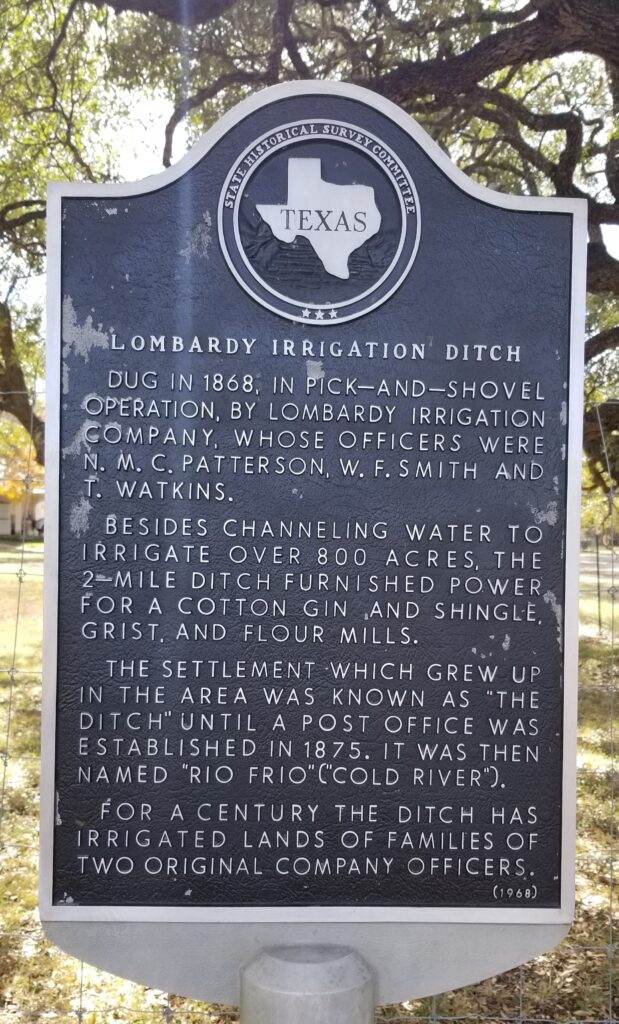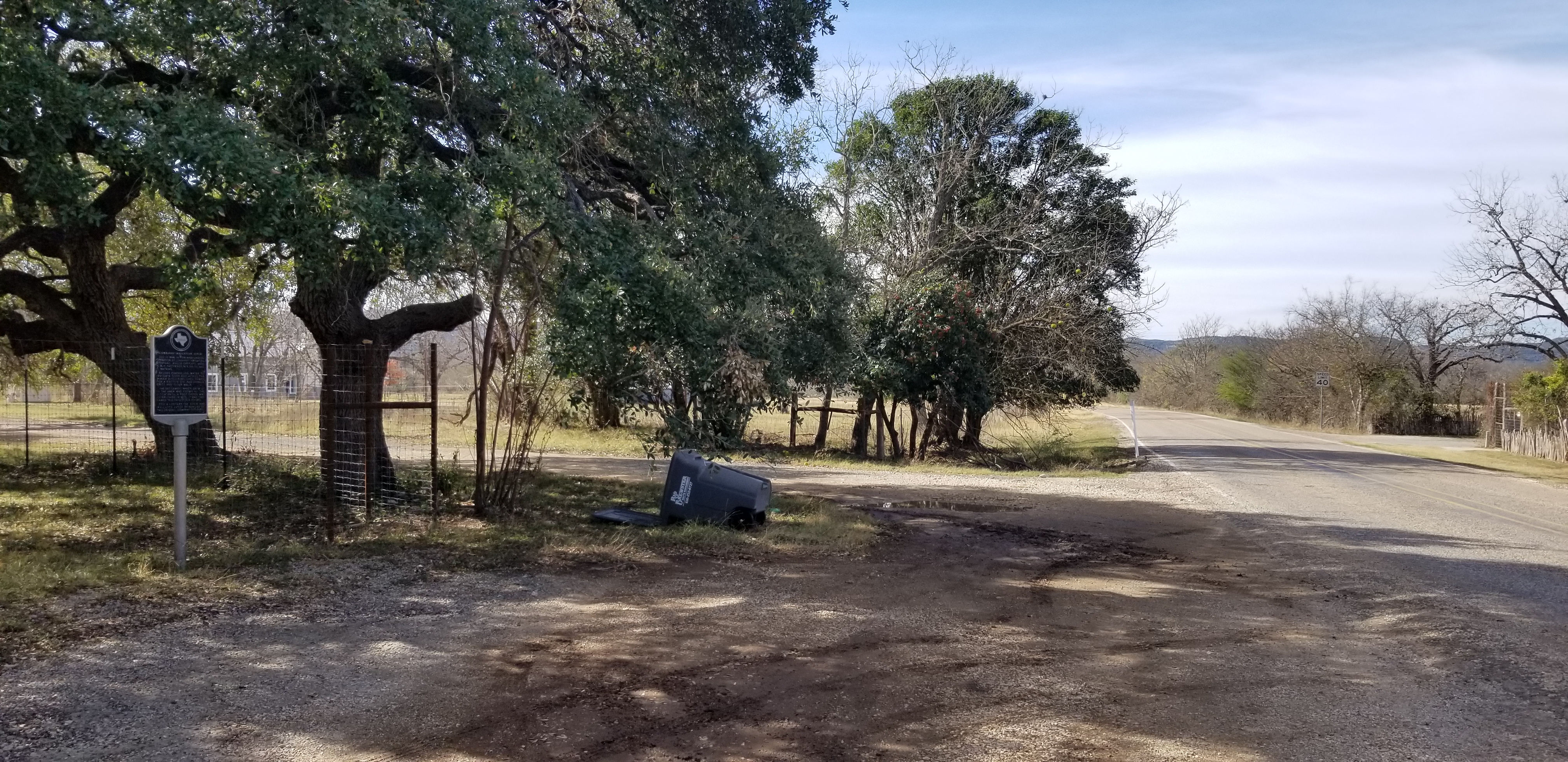Lombardy Irrigation Ditch, Rio Frio, Texas
Author: Melinda Luna PE
October 2023

Photographer: James Hulse
Taken: December 21, 2021
In 1868, Theophilus Watkins, Watkins F. Smith, and Newman M. Patterson set out to dig a gravity flow irrigation canal off the Frio River. In 1875, the Lombardy Irrigation Company recorded a charter to irrigate 824 acres, diverting 3,460 act ft a year by using 1,600-acre feet of water and returning the rest to the Frio River. The charter also recorded having a 5-foot bottom and 7 ft on top with a slope of 4.11 ft in 1,000 ft. The length of the canal was recorded as 10 miles in some documents and in others only 2 miles. The charter also allowed the use of a dam to divert water no more than 6 feet high and maintain the channel. This dam was made of brush initially and rebuilt several times. At the time of the building of the irrigation ditch, there were not many settlements. The settlement was originally called “The Ditch” but changed its name to Rio Frio. It was not unheard of to have Comanche, Apache, and Lipan Apache raids in the area. The irrigation canal revolutionized the town because the water could also be utilized to generate hydroelectric power, which powered mills in the area. With an annual rainfall of 30.4 inches, the Frio River provided water for irrigation. Floods were recorded and noted several flows of more than 100,000 cfs on June 15, 1899, September 18, 1923, September 16, 1936, and July 1, 1932.

In a review of the three men who built the canal, the census records their professions as farmers. The construction of the canal was recorded as built with picks and shovels. These men moved approximately 1 million cubic feet of earth to create the canal (if 10 miles long), in a time when much of the area was very remote. The first one of the group to move to the area was Theo Watkins. He first came to the area in 1845 from Kentucky. He served in the military and was a captain in the army. He served at Fort Inge, a frontier fort now located in Southern Uvalde, Texas. He traveled to California in 1848 as part of the Gold Rush, then returned to Kentucky in 1850, only to return to this area of Texas in 1854. Watkins passed away in April of 1883. He was credited as an irrigation pioneer. It is uncertain how he learned about canal construction, but it could have been as part of his military training. The majority of early military training consisted of surveying and basic ditch construction.

Photo added by Diana Moore-Medina
Soon after other charges such as the Leona Irrigation and Agricultural Association, Vaugh Agricultural, and Mechanical Canal Company used this as an example to provide a way to farm the area.
Along with farming, the Lombardy Academy was formed as a private school that offered an education. The irrigation ditch continued to provide water for the main crop of cotton until 1918 because the boil weevil infestation devastated the cotton industry in the area. This gave way to the ranching of goats for mohair.
In 1968, the Texas Historical Commission installed a plaque at the intersection of RM 2748 and 1120. At that point, the irrigation ditch had provided water to the area for 100 years. A presentation was done by local historians and recorded in the local newspaper as the plaque was dedicated. With the help of civil engineers who grew up in the area, the canal was mapped, and the estimated mileage of the waterway was around 4.7 miles.
The irrigation canal is still visible today, but many locals who are aware of it claim that water hasn’t flowed through it in years. Some of it has been filled in and most of the ditch is on private land. The area’s economy revolves around livestock that includes cattle, sheep, and angora goats which is less dependent on irrigation. The fact that this canal served the area for at least 100 years, on the other hand, is a feat of engineering.

Taken: December 21, 2021
Caption: The view of the Lombardy Irrigation Ditch Marker from the highway
Submitted: January 1, 2022, by James Hulse of Medina, Texas.



